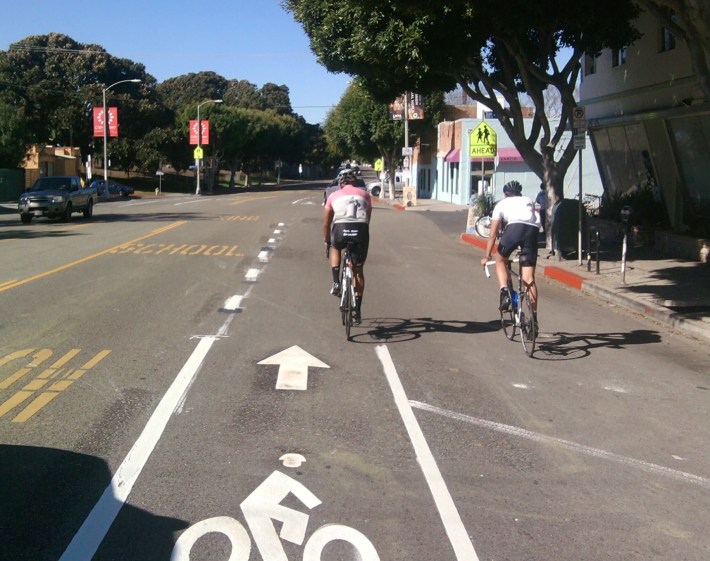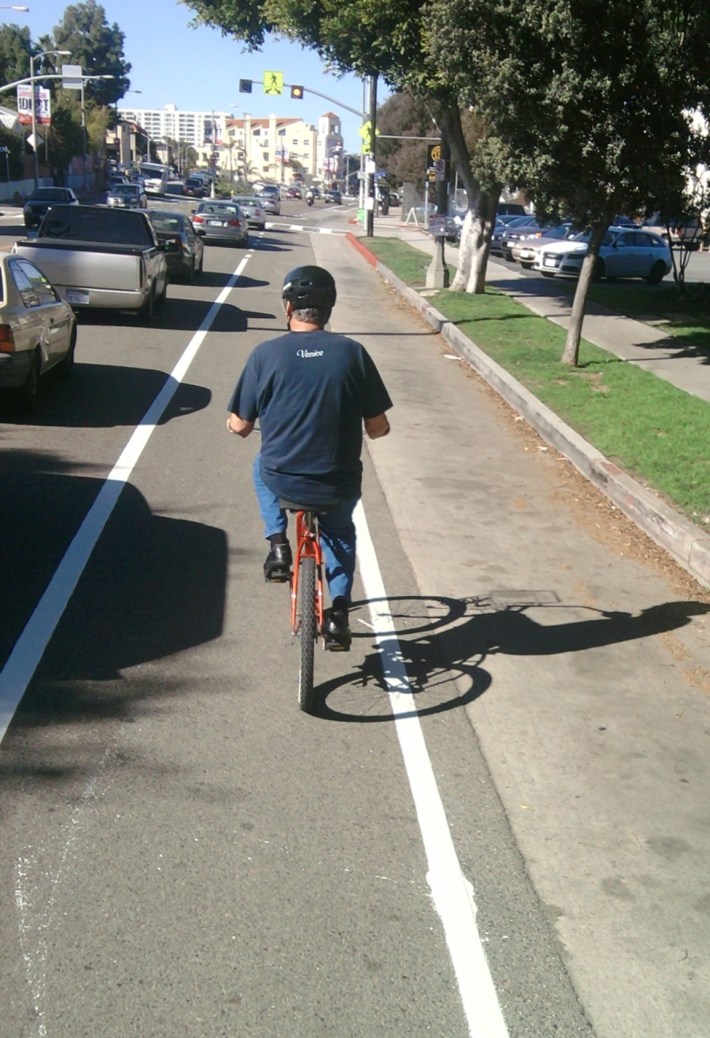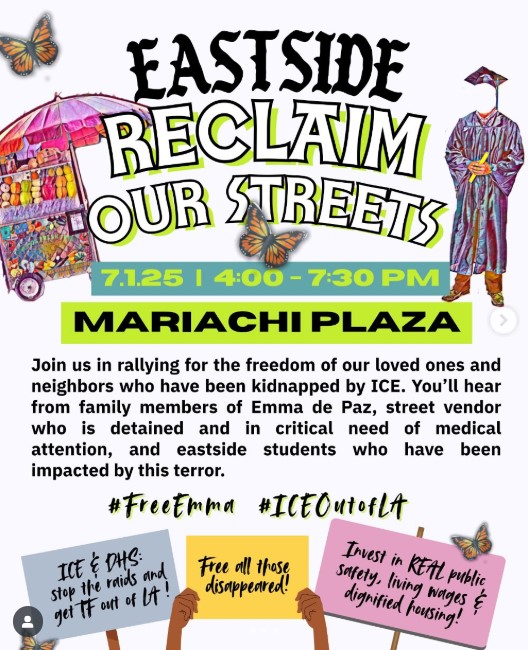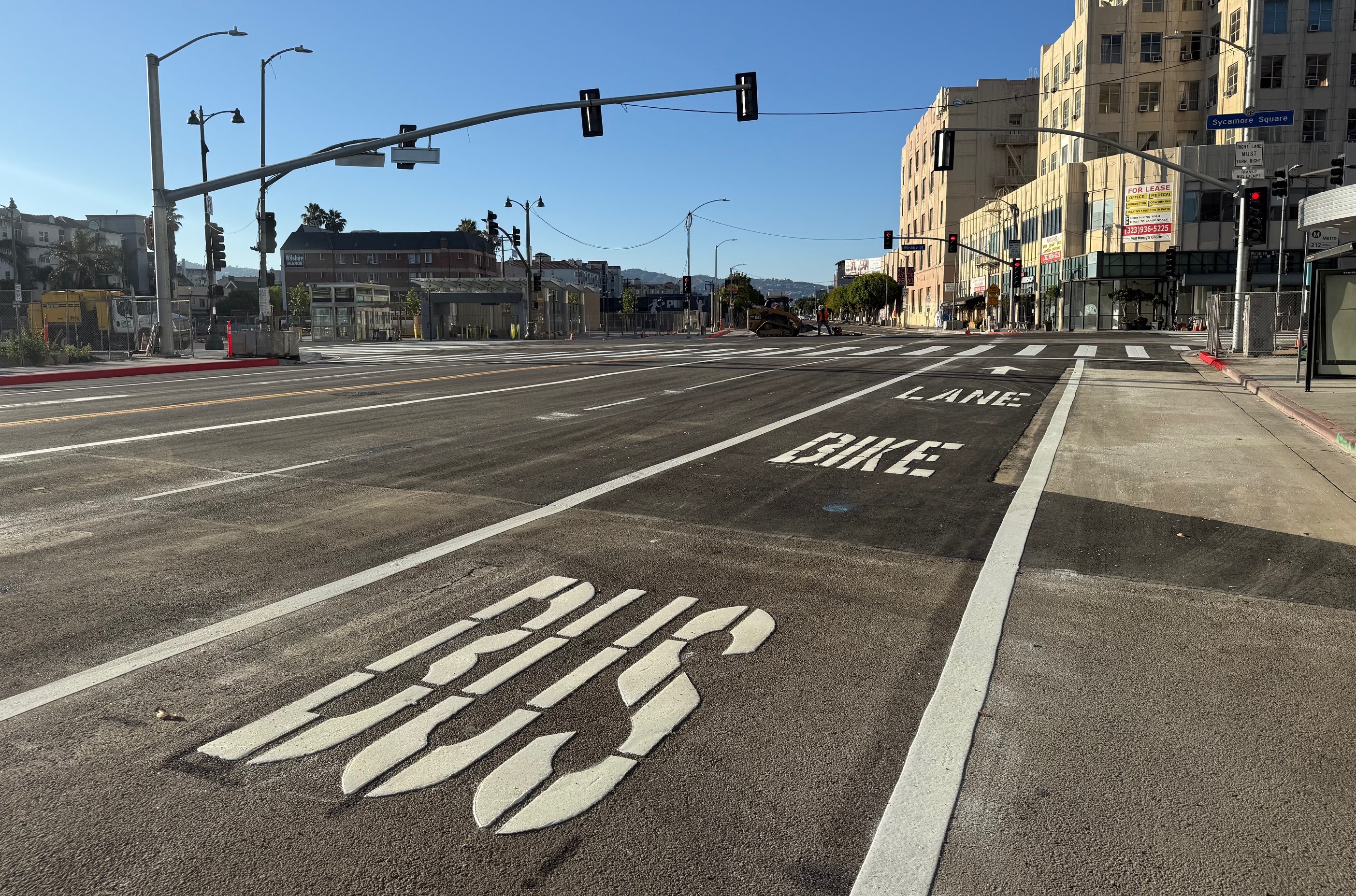
The first time I biked down Main Street in Santa Monica and then into the Venice Neighborhood of Los Angeles was the summer of 2008. I was following Santa Monica Critical Mass and part of the comically over-aggressive antics of the SMPD included herding cyclists into the lane by buzzing groups of cyclists on motorcycles and cruisers until we passed into Los Angeles. When we crossed the border two things vanished, the police presence and the bike lane.
Fast-forward three and a half years and the situation has changed. While Santa Monica has sporadic Critical Mass rides, they don't draw near the number of riders or police presence their predecessors dud. And as of Friday night, the transition from Santa Monica to Los Angeles on Main Street is seamless for bicyclists.
At long last, the Main Street Road Diet is in place. The former five lane configuration has been re-striped to have three through travel lanes, including a turn lane, two bicycle lanes and two lanes of car parking. The road diet connects Windward Circle at the south end to the Santa Monica border, just North of Rose Avenue. The diet is .8 miles long.
There are many reasons to consider "putting a road on a diet" by reducing the capacity for cars and increasing capacity for everyone else. Usually, diets are completed on streets with lower traffic volumes and higher than average bicycle and pedestrian use. By giving more space to bicyclists, diets don't just benefit cyclists but also pedestrians who benefit from a better walking environment and car drivers who get to drive in a safer environment.
After other road diets drew opposition from neighborhood groups and ABC 7, LADOT met twice with the Venice Neighborhood Council. The feedback they received was requests that the Diet either give more space to cyclists or abandon the diet for a series of traffic calming and Sharrows. In response, LADOT increased the width of the bike lanes by six inches so that the bike lane and adjacent parking weren't both the minimum widths. The "compromise" plan didn't leave critics happy, but at least made the project better than "minimum width for bikes, maximum space for cars."
Joe Linton reviewed the lanes over the weekend for the Eco-Village Blog. Some more of his pictures are available after the jump.








